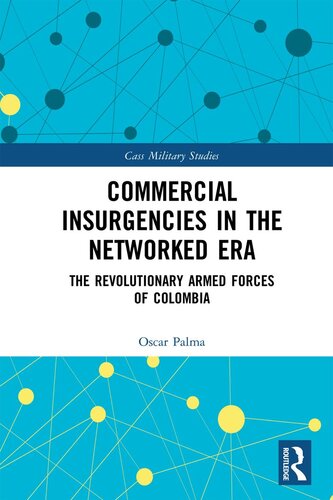

Most ebook files are in PDF format, so you can easily read them using various software such as Foxit Reader or directly on the Google Chrome browser.
Some ebook files are released by publishers in other formats such as .awz, .mobi, .epub, .fb2, etc. You may need to install specific software to read these formats on mobile/PC, such as Calibre.
Please read the tutorial at this link: https://ebookbell.com/faq
We offer FREE conversion to the popular formats you request; however, this may take some time. Therefore, right after payment, please email us, and we will try to provide the service as quickly as possible.
For some exceptional file formats or broken links (if any), please refrain from opening any disputes. Instead, email us first, and we will try to assist within a maximum of 6 hours.
EbookBell Team

4.3
98 reviewsThis book examines the Revolutionary Armed Forces of Colombia (FARC) as a commercial insurgency through the network-complex paradigm of insurgency.
Countering traditional perspectives of the group, it proposes new and comprehensive explanations for the FARC’s presence in Latin America. Existing narratives have portrayed the FARC as a terrorist, narco-terrorist, or criminal organization – a narrative popularized by the government offensive conducted by the Colombian state during the last couple of decades. In contrast, this book goes beyond simplistic perspectives of the FARC and instead studies the group in relation to the network-complex paradigm of insurgency. It explains the organization as a ‘commercial insurgency’ with three dimensions – political, criminal, and military – and understands the Colombian insurgency not as a monolith, but as a system of individuals with diversified interests ranging from the highly indoctrinated to the profit-motivated. This examination allows for an analysis of some of the insurgency’s most unexplored characteristics: an interest in urbanizing its actions and the increased ‘invisibility’ of combatants, the significance of its political institutions, and the construction of its transnational networks. The volume also discusses the future of FARC in post-conflict Colombia, not only within the country but as an actor in the region.
This work will be of much interest to students of insurgencies, military studies, Latin American studies, criminology, security studies, and IR.